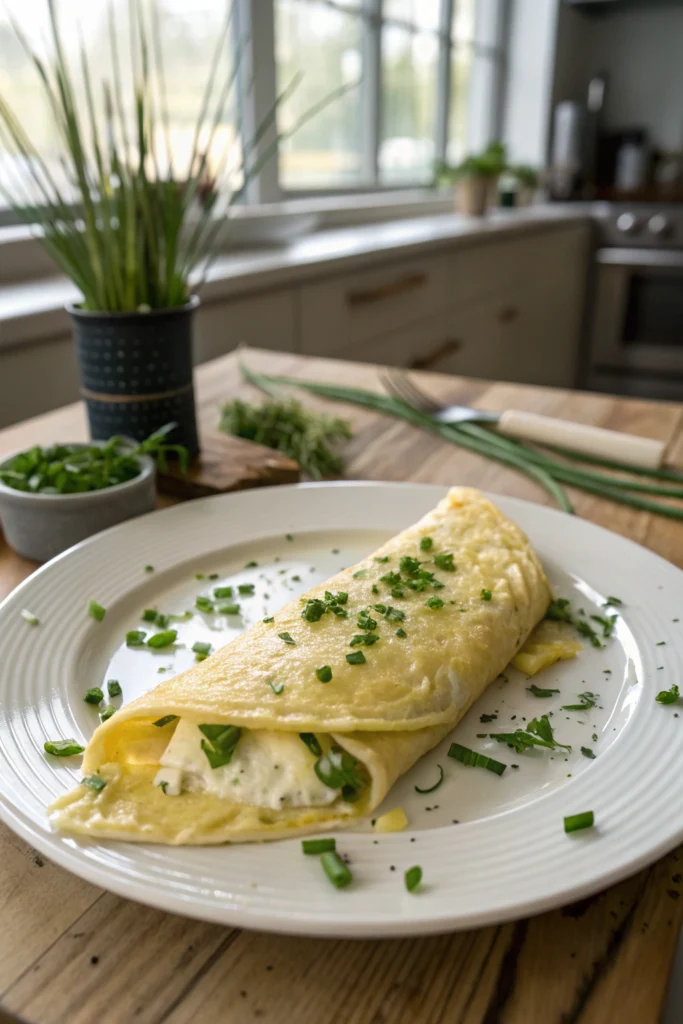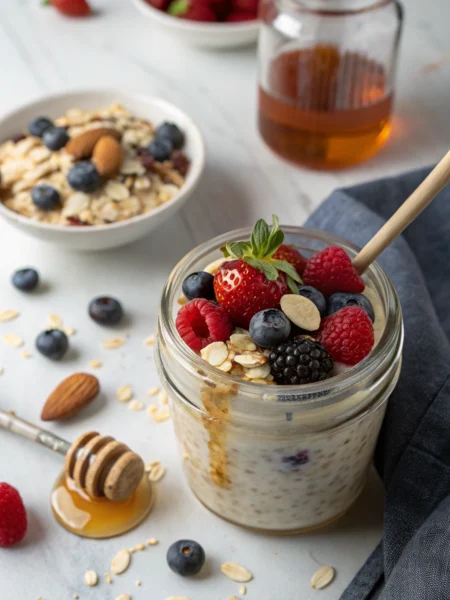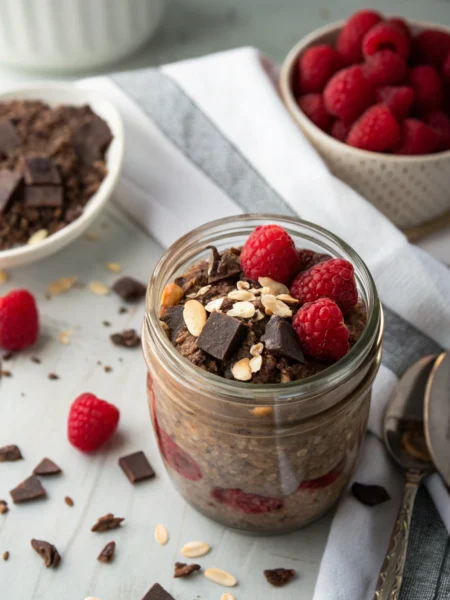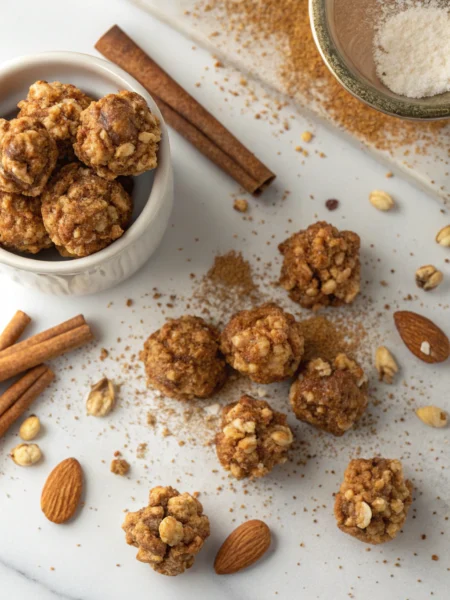Oh my goodness, let me tell you about my journey to the perfect omelette recipe! After countless Sunday morning fails (and more than a few egg disasters), I’ve finally cracked the code. You know those restaurant-style omelettes that fold like butter and taste like heaven? Yeah, I used to dream about making those at home. Through lots of trial and error (and maybe a few slightly charred attempts), I’ve figured out the secrets to nailing this breakfast classic. This omelette recipe isn’t just another internet tutorial – it’s your ticket to becoming the breakfast hero your family deserves. Trust me, once you master these techniques, you’ll never look at breakfast the same way again.
Essential Ingredients for the Classic Omelette
Choosing the Right Eggs for Your Omelette
Let’s talk eggs, friends! For the best omelette recipe results, I always grab large, farm-fresh eggs from my local market. They’re total game-changers! Last week, I compared store-brand eggs with the fancy organic ones from the farmers’ market, and wow – what a difference in both color and taste. Here’s my pro tip: always let your eggs come to room temperature before cooking. Cold eggs straight from the fridge are basically asking for trouble! I learned this the hard way when rushing through my omelette recipe one hectic Monday morning. For a two-egg omelette, you’ll want the freshest eggs possible – they’ll give you that gorgeous golden color and rich flavor that makes breakfast worth waking up for.
Best Cheese Options That Melt Like a Dream
When it comes to perfecting your omelette recipe, choosing the right cheese is crucial – and boy, do I have some favorites! After years of experimenting (and some questionably rubbery results), I’ve found that Gruyere is absolutely magical in an omelette. It melts like a dream! But don’t worry if you can’t find fancy cheese – good old sharp cheddar works beautifully too.
The key is to grate it yourself instead of using pre-shredded stuff. Those anti-caking agents in packaged cheese can make your omelette grainy. I learned this trick from my grandmother, who’d always say, “A few extra minutes of grating makes all the difference!” For the perfect melt, sprinkle the cheese when your eggs are still slightly wet on top.
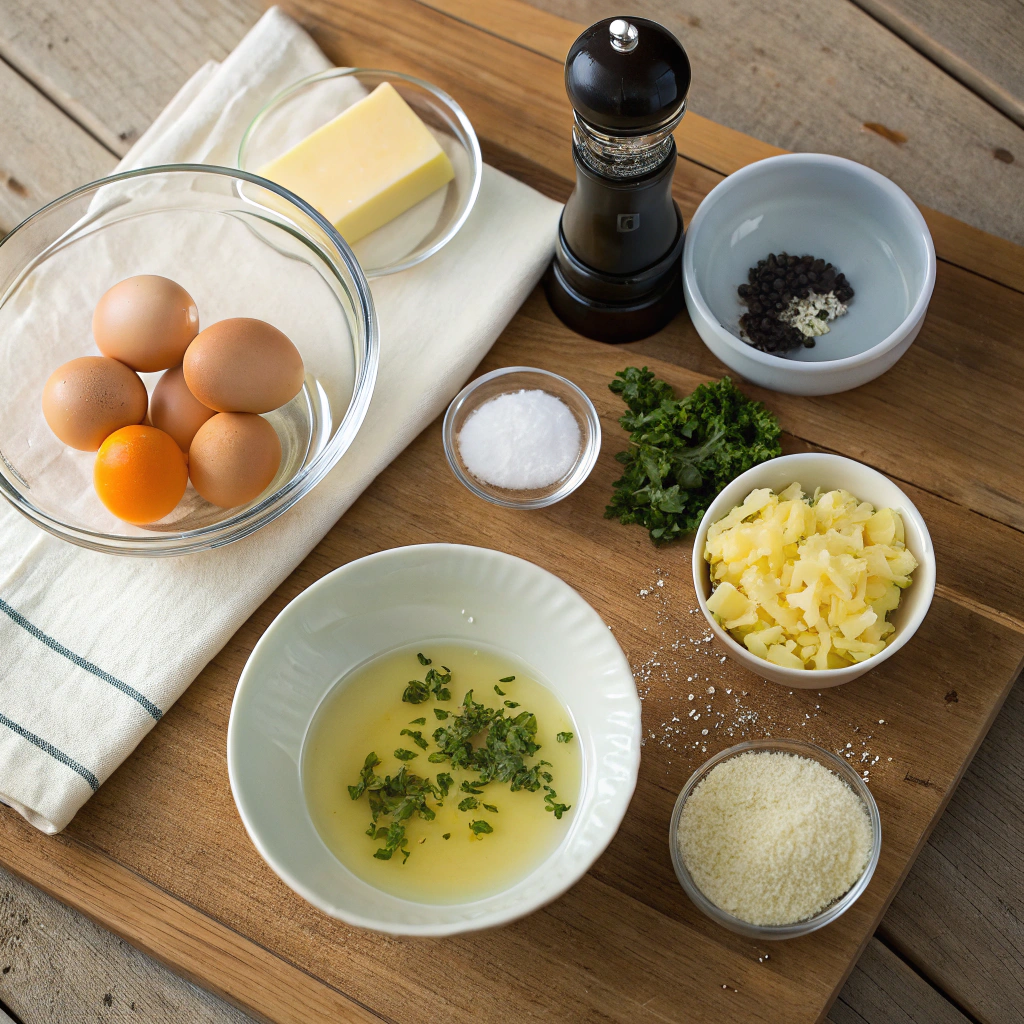
Fresh Herbs and Seasonings That Make Magic
Nothing elevates a basic omelette recipe quite like fresh herbs! I keep a tiny windowsill herb garden just for my morning omelettes – total game-changer! Chives are my go-to (seriously, they’re like breakfast magic), but fresh parsley and tarragon are close runners-up. Last summer, I discovered that a pinch of fresh dill takes an omelette from good to “Oh my gosh, you need to try this!”
As for seasonings, keep it simple: kosher salt and freshly ground black pepper are your best friends here. I used to go crazy with garlic powder and fancy seasonings until my chef friend taught me that sometimes less is more. Just remember to season your eggs before they hit the pan – it makes a world of difference!
Master Basic Omelette Recipe Techniques
The Perfect Pan Temperature Secret
Getting your pan temperature right is crucial for a fantastic omelette recipe. Start with a non-stick pan over medium heat – you’ll know it’s ready when a drop of water dances across the surface. Too hot, and your eggs will brown and become rubbery. Too cool, and they’ll stick and turn out soggy. I learned this the hard way after countless failed attempts!
For the best results, let your pan heat for about 2 minutes, then add a small pat of butter. When it starts to foam but hasn’t browned, you’re at the sweet spot. This is when I pour in my beaten eggs for that perfect golden omelette every time. Remember to tilt the pan to spread the eggs evenly, and don’t forget to lower the heat slightly once the eggs hit the pan.
Whisking Methods for Cloud-Like Texture
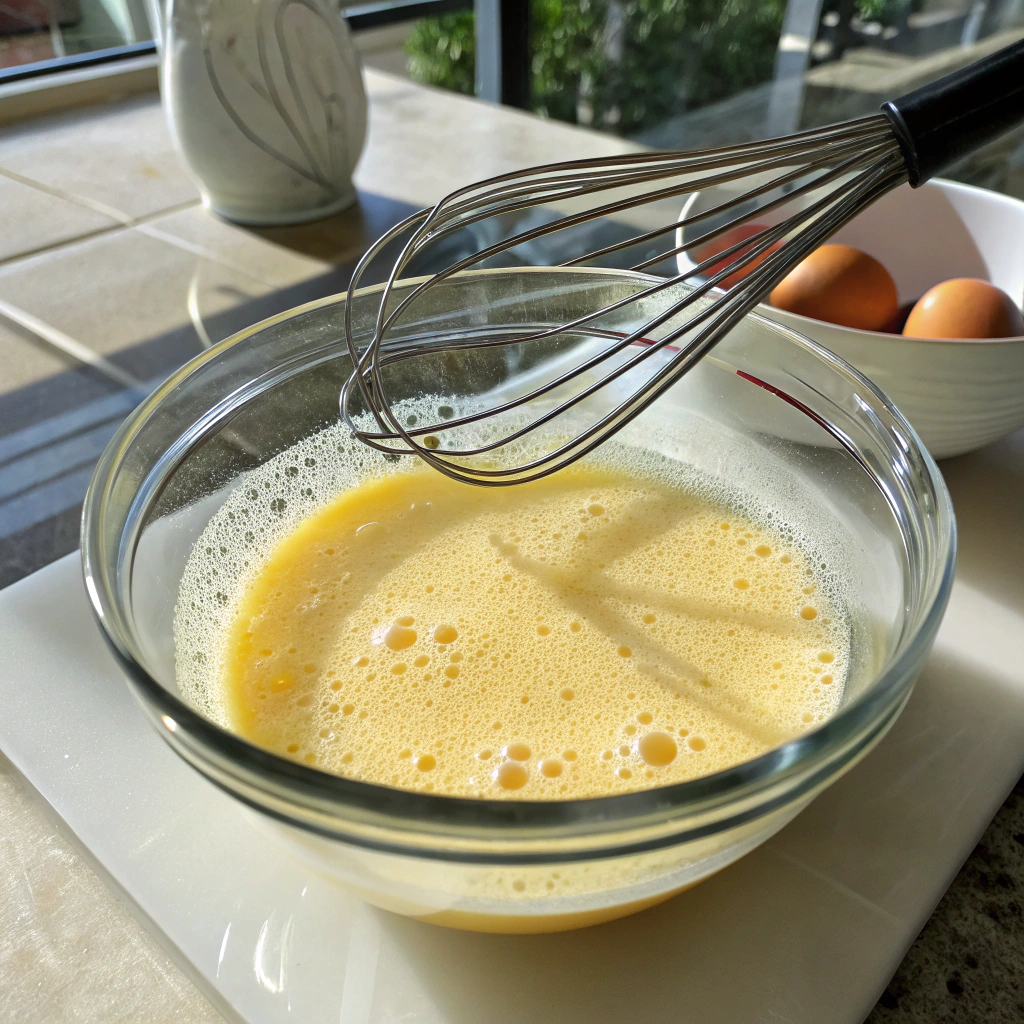
Creating the perfect omelette recipe starts with properly whisked eggs. I swear by using a large bowl and fork rather than a whisk – it gives me better control and prevents over-beating. Beat your eggs until they’re just combined and you see a uniform yellow color with tiny bubbles throughout. A pro tip I picked up from my grandmother: add a splash (about 1 tablespoon) of cold water per three eggs while whisking. This creates steam as the omelette cooks, making it incredibly fluffy. Some chefs use milk, but I find water gives a lighter result. The key is not to overwork the eggs – stop as soon as you don’t see any separate strands of egg white.
Folding Your Omelette Like a Pro Chef
Mastering the fold is what transforms a basic omelette recipe into something special. Once your eggs are about 80% set but still slightly wet on top, it’s go time! Gently shake the pan to ensure nothing’s sticking. Using a silicone spatula, carefully lift one edge and peek underneath – you want a light golden color. Now comes the tricky part: tilt your pan at a 45-degree angle, and use your spatula to fold one-third of the omelette toward the center. Let it rest for 10 seconds, then fold the other third over. This three-fold technique creates those beautiful layers you see in restaurant omelettes.
Popular Omelette Filling Combinations
Classic Denver Omelette Recipe Guide
The Denver omelette recipe is a true American breakfast icon. Start with diced ham, green bell peppers, onions, and shredded cheddar cheese. I like to sauté the vegetables until they’re just tender before adding them to my omelette – this ensures everything’s perfectly cooked. Pro tip: let your fillings come to room temperature before using them. Cold ingredients can make your eggs cook unevenly. For the best Denver omelette, I use about two tablespoons each of diced ham and vegetables, plus a quarter cup of cheese. Remember to season your vegetables while sautéing – it builds better flavor than just salting the eggs.
Mediterranean Mix-ins That Never Fail
Creating a Mediterranean-style omelette recipe brings sunshine to any morning! I love combining crumbled feta, halved cherry tomatoes, and fresh spinach leaves. The key is to use room-temperature ingredients for even cooking. Before adding to your omelette, quickly wilt the spinach in the pan and pat the tomatoes dry to prevent excess moisture. A sprinkle of dried oregano and a few kalamata olives make this combination truly authentic. For an extra special touch, drizzle your finished omelette with good quality olive oil and a pinch of sea salt. This combination works beautifully for any meal of the day.
Veggie-Loaded Breakfast Combinations
A veggie-packed omelette recipe is my go-to for a healthy start. I love mixing sautéed mushrooms, bell peppers, and zucchini with fresh herbs. The trick is pre-cooking your vegetables until they’re just tender – this removes excess moisture and concentrates their flavors. For the perfect veggie omelette, I use about a half cup of mixed vegetables per three eggs. Adding a handful of baby spinach at the last minute provides a nice color contrast and extra nutrients. Don’t forget to season your vegetables while they’re cooking! A sprinkle of fresh herbs like chives or parsley adds a beautiful finishing touch.
Troubleshooting Common Omelette Mistakes
Why Your Omelette Sticks to the Pan
Making the perfect omelette recipe starts with preventing that frustrating sticking issue. I learned the hard way that preheating your pan properly is crucial – let it warm up for 2-3 minutes before adding any butter or oil. Your pan choice matters too! A good non-stick skillet is worth its weight in gold for omelette making. I swear by my 8-inch non-stick pan that I only use for eggs. Remember to keep your heat medium-low; too hot and your omelette will stick no matter what. Another game-changer was learning to test the pan’s temperature by adding a tiny drop of water – if it dances and evaporates quickly, you’re good to go!
Fixing Overcooked or Rubbery Results
The secret to a tender omelette recipe lies in timing and temperature control. I used to end up with tough, rubbery eggs until I discovered that taking the pan off the heat while the eggs are still slightly wet on top makes all the difference. The residual heat will continue cooking your omelette to perfection. Another tip: whisk your eggs just until combined – overbeating incorporates too much air and can lead to a tough texture. For extra insurance against overcooking, try adding a splash of heavy cream or milk to your egg mixture. This adds richness and helps keep things tender.
Preventing the Dreaded Broken Omelette
Nothing’s worse than attempting to fold your omelette recipe only to have it break apart! The key is patience – wait until the eggs are set around the edges but still slightly wet on top before adding fillings. If you’re looking to expand your breakfast skills, try making scrambled eggs with cheese using similar temperature control techniques. I like to lift the edges gently with a spatula, letting uncooked egg flow underneath. When it’s time to fold, less is more. Use a wide spatula and make one confident flip rather than second-guessing yourself. If disaster strikes, just call it a “rustic scramble” – it’ll taste just as good! Pro tip: warming your fillings beforehand prevents them from breaking through the eggs.
Quick Omelette Recipe Variations
5-Minute Basic French Omelette
This classic omelette recipe is all about technique and simplicity. Start with three fresh eggs, beaten just until combined with a pinch of salt. Heat your pan over medium-low heat, add a pat of butter, and wait for it to stop foaming. Pour in your eggs and stir gently with a fork, creating soft curds. Once the bottom is set but the top is still slightly wet, stop stirring. Give the pan a shake to even out the eggs. If you’re feeling fancy, add some finely chopped herbs. The whole process should take no more than 5 minutes.
Fluffy American-Style Diner Version
This hearty omelette recipe starts with a trick I learned from a diner cook – separate your eggs and whip the whites until soft peaks form. Beat the yolks separately with a splash of water and fold them gently into the whites. Heat your pan with butter until it’s just starting to bubble. Pour in your egg mixture and let it cook until the bottom is golden. Add your favorite fillings (I love mushrooms and cheese) to one half, then fold and finish cooking until the cheese melts. This method creates that signature fluffy texture diners are famous for.
Spanish Tortilla Inspired Twist
This fusion omelette recipe combines the best of both worlds. Start by cooking thinly sliced potatoes and onions in olive oil until tender. While they’re cooking, beat six eggs with a pinch of smoked paprika. Pour the eggs over your potato mixture and cook over low heat until the edges start to set. Here’s where it gets fun – instead of folding, we’re going to flip the whole thing! Place a plate over your pan, flip confidently, then slide it back in to cook the other side. It’s a showstopper at brunch!
Start Your Omelette Adventure Today

Ready to master your own signature omelette recipe? Start with our basic technique, then get creative with fillings. Share photos of your creations in the comments below – we love seeing your breakfast victories! For a delicious breakfast pairing, try serving your omelette with a cozy quinoa breakfast bowl for added nutrition and variety. Join our Sunday morning cooking challenges, swap filling ideas, and learn from fellow egg enthusiasts. Remember, practice makes perfect, and every pan flip gets easier.
Perfect Omelette Recipe
Master the art of making a classic French omelette with this foolproof recipe. Featuring soft, creamy curds wrapped in a delicate egg blanket, this breakfast staple transforms simple ingredients into an elegant meal.
Ingredients
Instructions
Prepare the Egg Mixture
- Crack eggs into a medium bowl
- Add water, salt, and pepper
- Beat with a fork until just combinedStop when no egg whites are visible
- Set aside while preparing the pan
Heat the Pan
- Place an 8-inch non-stick skillet over medium heat
- Add butter and swirl until foaming subsidesPan is ready when a drop of water sizzles gently
Cook the Omelette
- Pour beaten eggs into the center of the pan
- Stir constantly with a rubber spatula, creating small curds
- When eggs are 80% set but still wet on top, stop stirring
Add cheese if using
Tilt pan and tap to distribute remaining liquid eggs
Fold and Serve
- Using spatula, fold one-third toward center
- Fold opposite third over first fold
- Roll onto warm plate, seam side down
- Sprinkle with chives and serve immediately
Nutritional values
Servings: 1 ServingCalories:245kcalSodium:650mgTotal Carbohydrate:1gProtein:15g
Note
Storage and Tips :
Best served immediately
Can hold in warm oven (200°F) for up to 5 minutes
Substitute chives with any fresh herbs
For dairy-free version, use olive oil instead of butter
Serve with fresh baguette and mixed greens
Success Tips:
Use room temperature eggs for even cooking
Don't overcook - eggs should be slightly wet when folding
Keep heat medium-low to prevent browning
Practice the folding technique with a dry run using paper


